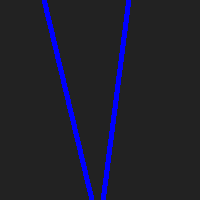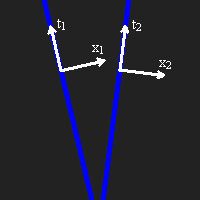Thanks for the reminder @LockeCJ - this topic is reopened for business.
I had speculated that abstract art, representational art, and language had come from contacts between different kinds of human minds-- starting with different populaions in Africa.
If this is true, then I guess I was probably wrong:
Probably is. Neanderthals developed the first industrial process:
I’m putting this here because scientists had such a hard time believing it and argued so much against what was presented. Personally, I don’t see the footprints breaking the “out of Africa” thesis – they were found in Greece, not Finland.
It’s like the recent finds in North America which indicate First Nations people have been in North America longer than previously thought. A curtain is being pulled back.
But science fiction has always told me that most time travel tends to go pear-shaped in the end…
Given that we don’t know how to deliberately time travel yet, I’m not worried.
If we can go into the past, and the past is already determined, then the future is already determined too.
If we can’t go into the past, then regardless whether the past is already determined, the future need not be.
Thank you, Spock.
I’ve always thought that time being a dimension that one could travel on was improper anyway. I think change is the fundamental time-like quantity, instead of time. Thus we only exist in the present, but things are changing within us and around us. We “travel” into the future all the time, but really its just the present changing. Thus time travel is impossible; there are no other times to travel to.
With this idea, traveling (spatially) near the speed of light wouldn’t be altered from Einstein’s; change would just happen more slowly.
I dunno, it makes sense to me.
Those may not change out of Africa, but the timing matters for understanding the Quarternary extinction. The idea humans were key in wiping out megafauna depends on them disappearing soon after we arrived, since they still exist in Africa, presumably because if we coexist for some time they can adapt to us (pre-industrial people, anyway).
The thing is, in relativity change doesn’t happen more slowly when you move near the speed of light, because that isn’t a thing. Motion is relative. When we are moving apart, I measure you changing slower, but you also measure me changing slower, and there’s no single shared present until we reunite. It makes sense if time is a dimension like space; that’s what happens when two coordinate systems are angled apart.
For general relativity you also have the problem that both space and time curve. Gravity waves are oscillations in both, and now we finally have evidence those are real and work much the way predicted. I don’t know how to reconcile that with the idea there the past and future don’t exist at any point. They don’t exist now, but the physics that explains what we see does so as a path connecting the two.
Doesn’t mean I think you should be able to time travel, mind. We know what paths connecting the past and the future look like – they look like particles, and molecules, and us, and stars and galaxies. Very neat things that don’t count. You would need to suppose some very different sort of path not in evidence, whether the laws of physics have time symmetry or not.
Interesting. I have trouble trying to understand that. But this is the possibly (un)true science news, so I guess my “hypothesis” qualifies.
Even more, they were found on Crete, which is halfway between Greece and Africa. Was there also a note etched into the stone saying “Hey future people, we came here from the north, not the south.”? And if the Mediterranean was mostly dried out back then, they may have developed somewhere that is has long been undersea.
Huh. That timeline does pretty much match up with the Messinian salinity crisis, which I would have never even known about if it weren’t for xkcd.
Well, I don’t know if you want it, but in case it’s helpful here is how I would explain it. Imagine two paths through a plane:
For the empty plane there’s no difference between horizontal and vertical lines, since all the directions are equivalent. For a path on the other hand, there is a difference between the direction along and the direction away. Each defines its own coordinate system:
Because of the angle between them, a change in t1 will be a bit less projected onto the t2 axis, and also a change in t2 will be a bit less measured along the t1 axis. It’s only if they are parallel that the coordinates can agree.
Measurements work a lot like this. You don’t move in space relative to yourself, but you do see your clock advance. So your t is a direction along your path from past to future, and the directions way from it are your x, y, z, spanning out what you see as the present moment. And it turns out, when we move apart, our axes are all a little different.
Now, those differences are not the ones from this picture. The plane is Euclidean; when you rotate your axes, any given point goes around a circle t2 + x2 = C. Spacetime is hyperbolic, which means the point goes along a hyperbola t2 – x2 = C. And because a hyperbola doesn’t go all the way around, the directions aren’t all equivalent. We can still pick different t1 and t2, but there is an asymptote before t1 can get near x2.
Even so, the basic idea that the directions are only relative to our own path still applies. It’s only since we are so slow and so much less sensitive to differences seen as temporal than spatial – a second of time seems short, the equivalent light-second of space seems long – that we appear to have a shared present.
Thank you — I’m going to study that till I understand it.


